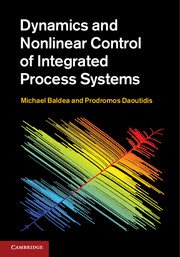Preface
Published online by Cambridge University Press: 05 September 2012
Summary
The chemical process industry is an intensely competitive environment, where cost reduction represents a critical factor towards increasing profit margins. Over the last few decades, an ever growing need to lower utility costs and energy consumption, and to improve raw material use, has spurred the development and implementation of increasingly integrated process designs that make extensive use of material recycling and energy recovery.
The significant reduction in capital and operating costs associated with process integration does, however, come at the price of additional operational and control challenges. Research on the control of interconnected process systems and entire chemical plants has been driven both by developments in control and optimization theory, and by shifts in market demands and industry needs. Initial efforts focused on decentralized multi-loop control structures and on including plant-wide considerations in the tuning of PID controllers. The associated benefits dwindled, however, with the rise of modern, tightly integrated processes with strong dynamic coupling between the different process units. More recently, control systems developed within the linear model predictive control (MPC) paradigm have allowed centralized decision making and accounting for economic optimality under operating constraints. In the (petro)chemical industry, MPC remains the established means for regulatory control and plant operation around a given steady state.
The current economic environment is, however, highly dynamic. Economically optimal plant operations thus entail frequent switching among different operating conditions (i.e., different steady states), having different product grades and production rates.
- Type
- Chapter
- Information
- Dynamics and Nonlinear Control of Integrated Process Systems , pp. xi - xivPublisher: Cambridge University PressPrint publication year: 2012

